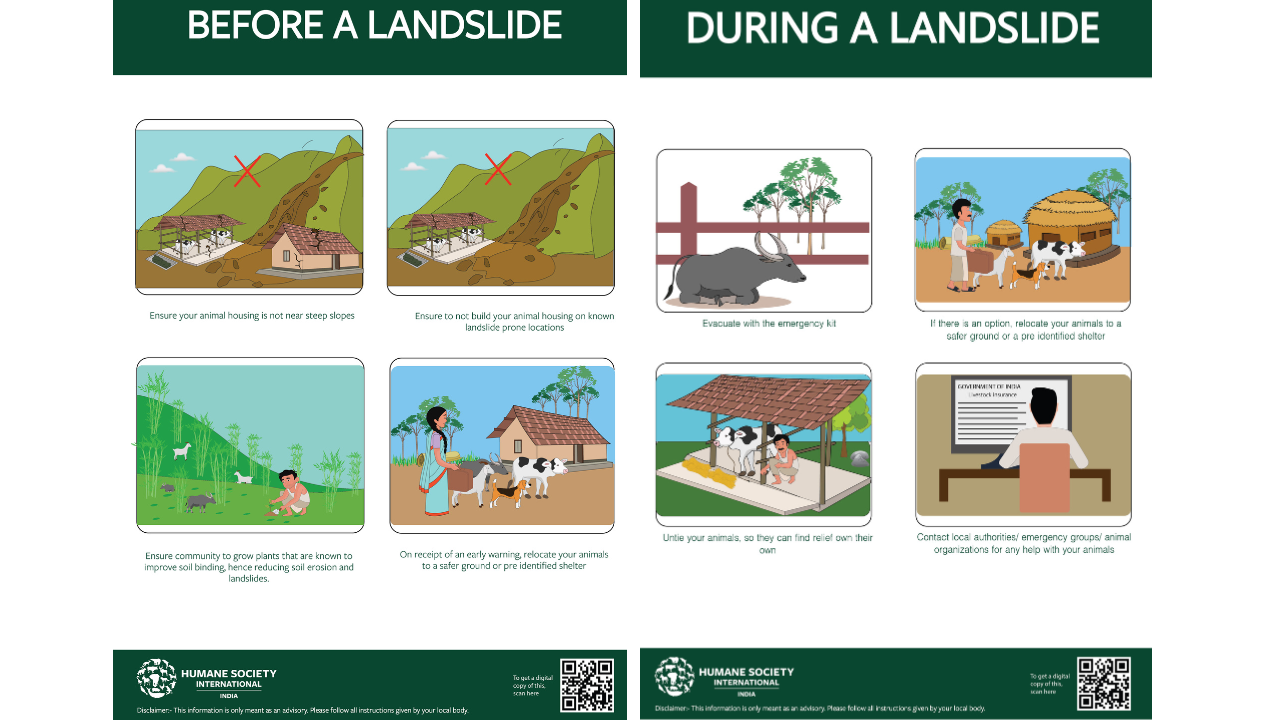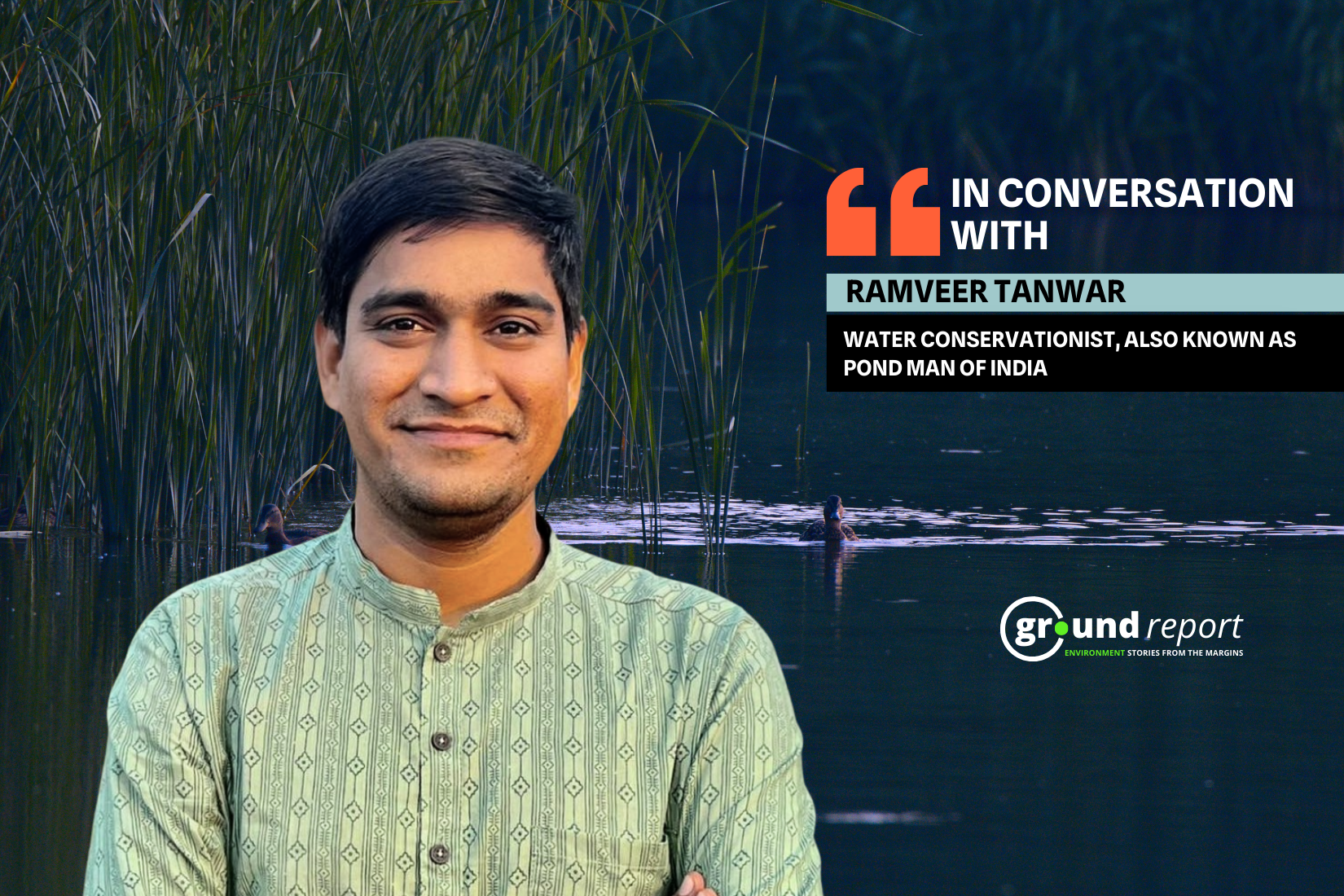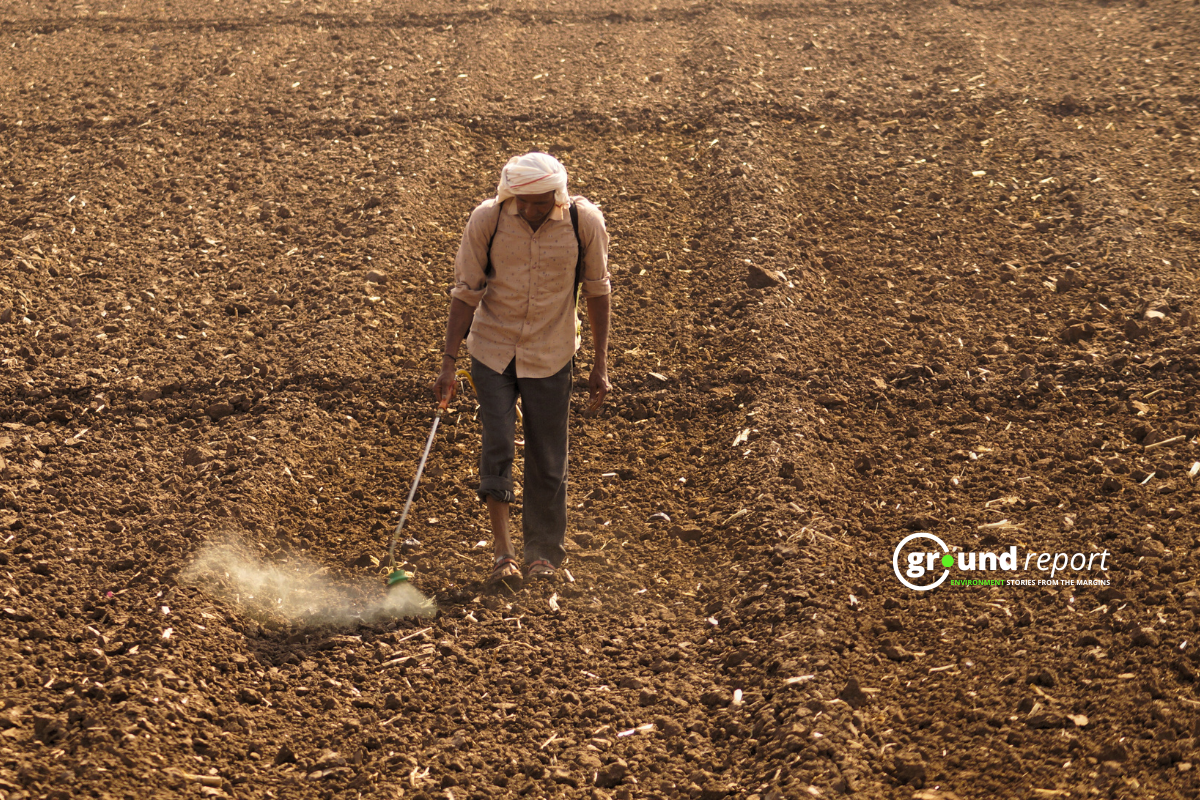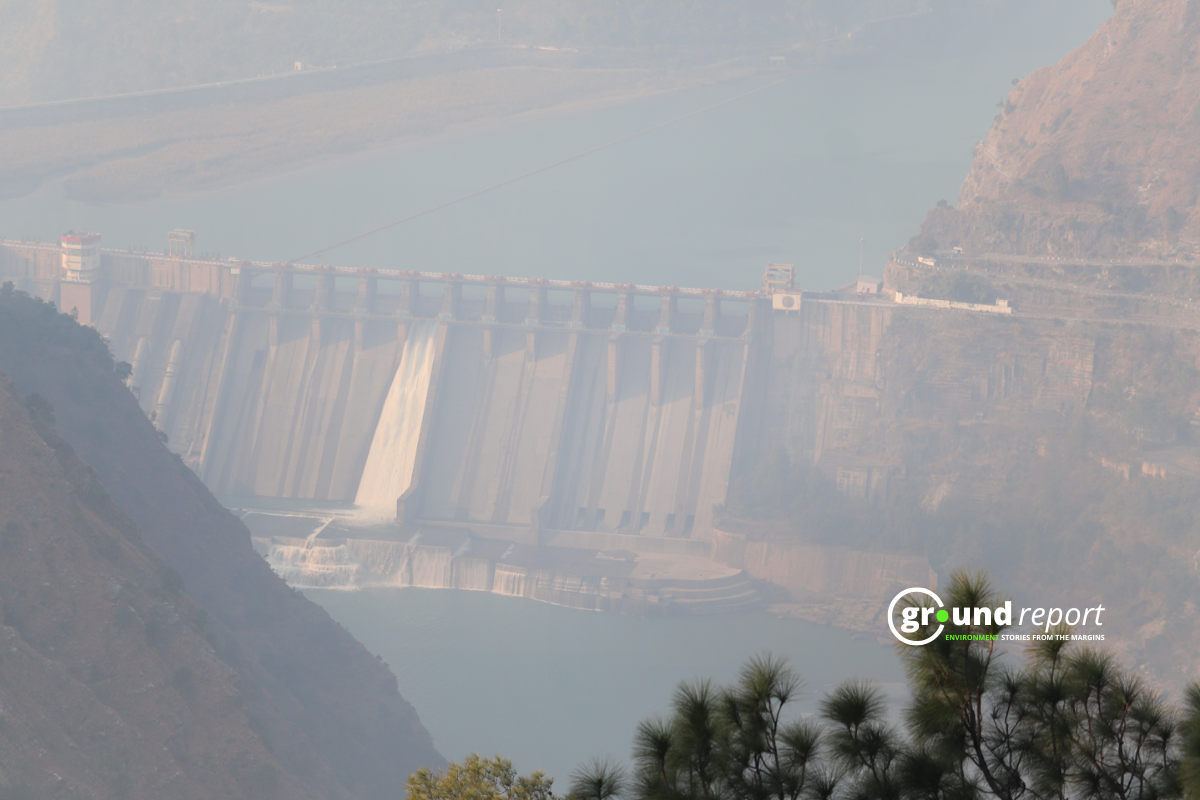In Kerala’s Wayanad district, around 358 people lost their lives and many went missing during the floods and landslides that hit the area in July this year. Praveen Suresh, Manager of disaster response and relief at Humane Society International/India, describes the devastating impact of the landslide in Wayanad, which covered eight kilometers of land and destroyed a bridge, making rescue efforts challenging. Praveen, who was working to rescue animals impacted during Wayand, shared difficulties and planned challenges to evacuate the domestic and wild animals. Often, when the people are evacuated and shifted to relief shelters in disasters, they are forced to leave their livestock behind.
Citing his experience, he shared that in a tribal colony, around 6 dogs were not fed for days. He and his team made an effort to identify the owners/caretakers of these dogs and ensured to take them along to feed the domestic animal and treat their wounds. While talking to Ground Report, he explained the significance of local habitat for the local breeds,
“Cattles who belong to the tea plantation workers and are in relatively safer areas know how to secure themselves and gaze at familiar fields. Such animals need not to be relocated.”
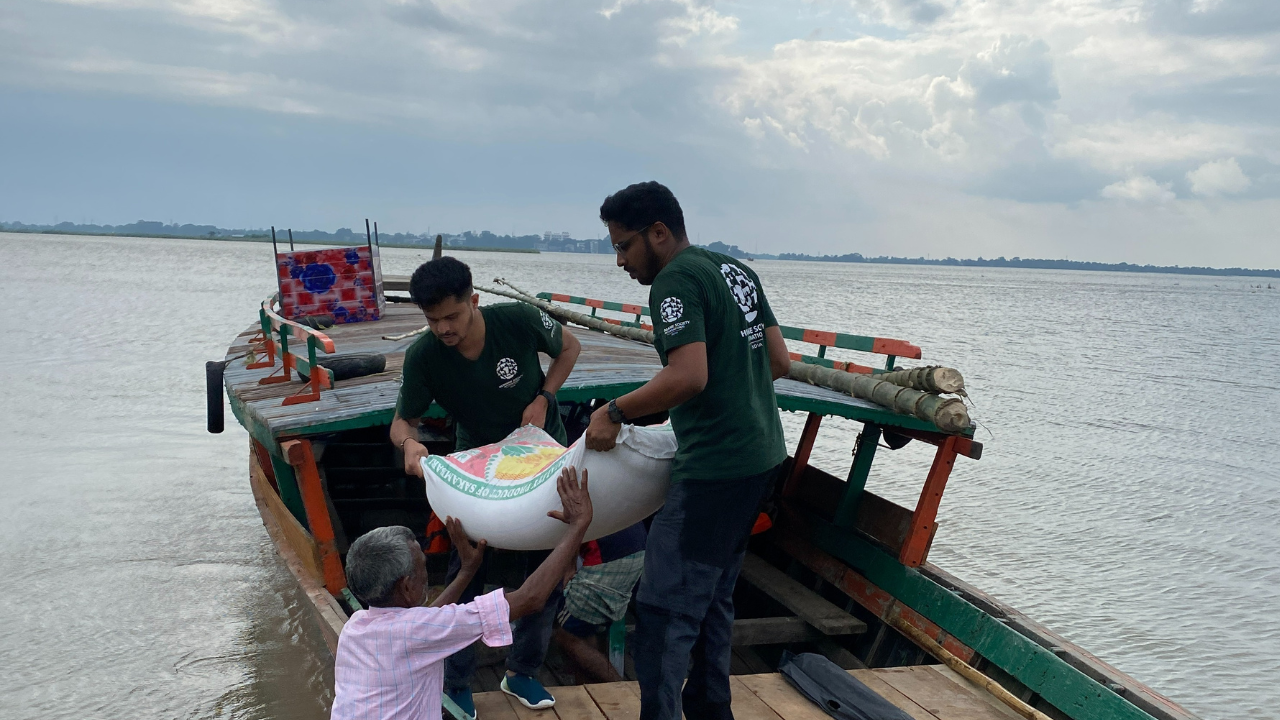
Emphasizing community collaboration and awareness, Praveen argued that many times the livestock does not need relocation but should be taken care of in their spaces.
How can communities help?
Along with the relevant knowledge of the needs of animals before, during and after disasters, Praveen believes the communities need to check on food, dehydration and injuries of their animals.
“People can learn how to help prepare first aid kids for their animals, identification of nearby safer locations and emergency actions.”
Praveen and his team for the last four years have been working in Wayanad to safeguard the animals. For this, they conduct a disaster preparedness training programme. The training is conducted at a ward level along with self-help Help Groups and other local associations like Kudambaje which helps to expand the scope of information. He highlighted that during the training, the residents are provided the local maps in which they mark the areas they consider safe during disasters. These locations after an inspection are then geo-tagged by Praveen’s team with a categorization of their safety with respect to landslides and floods.
“This helps communities and authorities as they already know certain locations which are safe beforehand. It eases the relocation and evacuation process,” he added.
A unique evacuation center model
The HSI team is working to develop an evacuation center for domestic animals in Wayanad district. It is a multi-purpose sustainable shelter which could accommodate all domestic animals like cattles, dogs and cats. With a veterinary clinic along with the shelter, a bio-gas plant and proper grazing ground nearby, the shelter will have a movable space which can be adjusted based on the requirement. Praveen says,
“It will be constructed by next year. The location is also identified with field studies to ensure the area is safe during disasters. This model will be an example not only for Kerala but the entire country. It will also be easy to replicate these types of evacuation shelters.”
The shelter will also be useful during non-disaster months where panchayats can use it for markets or meetings, which will also ensure its maintenance.
However, there are still many challenges that demand measures and planning. One major challenge during evacuation drives is lack of knowledge on the total number of animals impacted and identification of their locations, especially the street animals.
Lack of data on animals
While India does conduct livestock surveys, the recent being carried out in 2019. Praveen argues we have little to know information about the numbers of companion animals. And for livestock animals, the count might have considerably changed since the last survey.
“We are doing a disaster impact study and it is a tedious task to gather the numbers from veterinary clinics, authorities, animal husbandry department and panchayats,” he added.
According to him, the data is scattered everywhere and it can be collected systematically, this can be utilized not only during disasters but also for animals’ regular treatments like vaccination.
Mitigation Measures for Animal Safety During Disasters
Praveen emphasizes the need for better data collection and the inclusion of animals in disaster management plans. He suggests the construction of disaster-resilient animal shelters and the development of guidelines for disaster-resilient animal farms. With these considerations, his team is working to lay out an effective disaster management plan for Wayanad district.
“Manuals and guidelines by National Disaster Management Authority, data for animal live losses during disasters and proper surveys of land before shelter construction are some crucial steps,” Praveen believes.
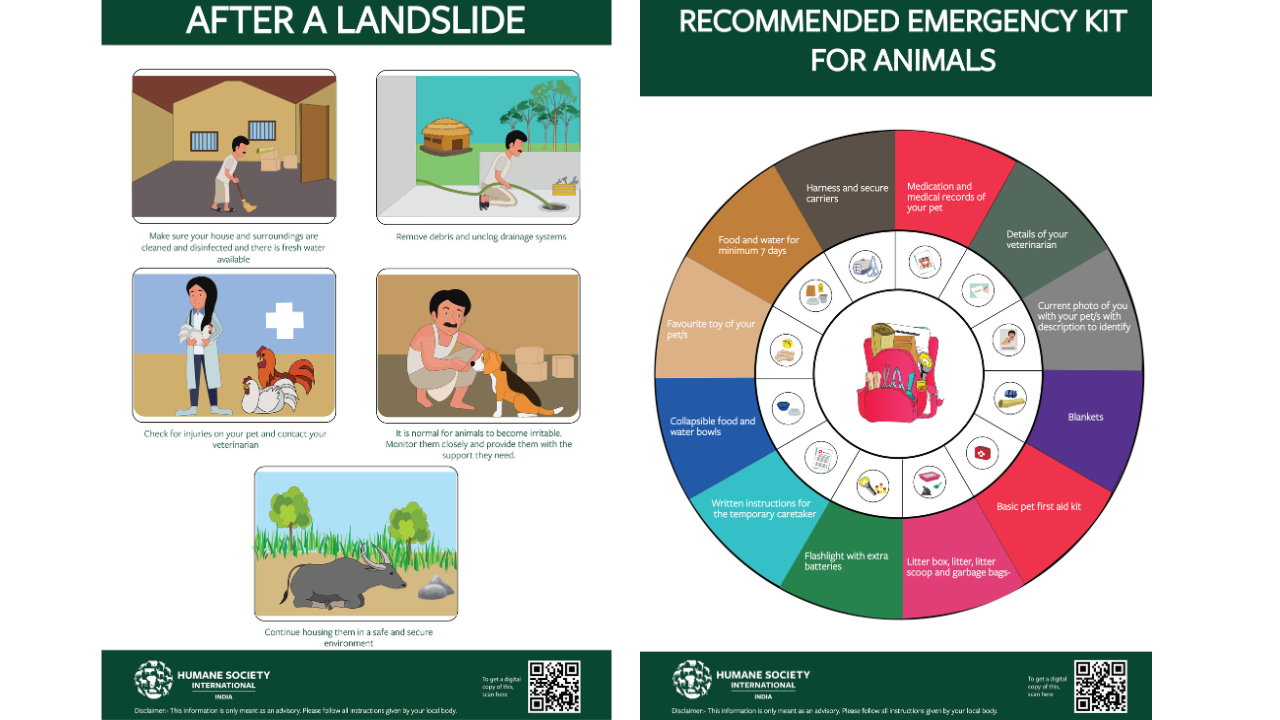
The training of rescue teams on animal handling and the need for a network of NGOs and rescue organizations for animal rescue during disasters, is crucial as it would help the forces in their rescue missions.
Climate Change makes it worse
Through his field observations and surveys in Odisha and Wayand, Praveen has explored the impacts of climate change on animals where many residents shared that their animals in summers have fainted and died. He informed,
“It did not happen before. Now, every year there is a new kind of problem due to extreme weather with respect to animal care.”
Other concerns include human and wild animal conflict, and growing infections in the animals. For example, the hybrid cattles are taken care of to produce milk and are sometimes unable to adjust with the local habitat. He mentions that almost 70 per cent of livestock in India are owned by poor or lower-middle class people who depend on them for livelihood and with climate change it affects them severely to ensure their security. The protection of an animal includes both economical and emotional sides for the people.
“Though the communities share close bonds with their animals and many times even risk their lives to protect them, frequent floods have made it hard for both humans and animals,” he added.
Support us to keep independent environmental journalism alive in India.
Follow Ground Report on X, Instagram and Facebook for environmental and underreported stories from the margins. Give us feedback on our email id greport2018@gmail.com.
Don’t forget to Subscribe to our weekly newsletter, Join our community on WhatsApp, Follow our Youtube Channel for video stories.
Keep Reading
Gujarat: 38 Animals, birds die at Statue of Unity complex in 2 years
18 billion animals sacrificed yearly without making it onto someone’s plate: Study
Living planet report: Global populations of wild animals declined 69% in 50 years

